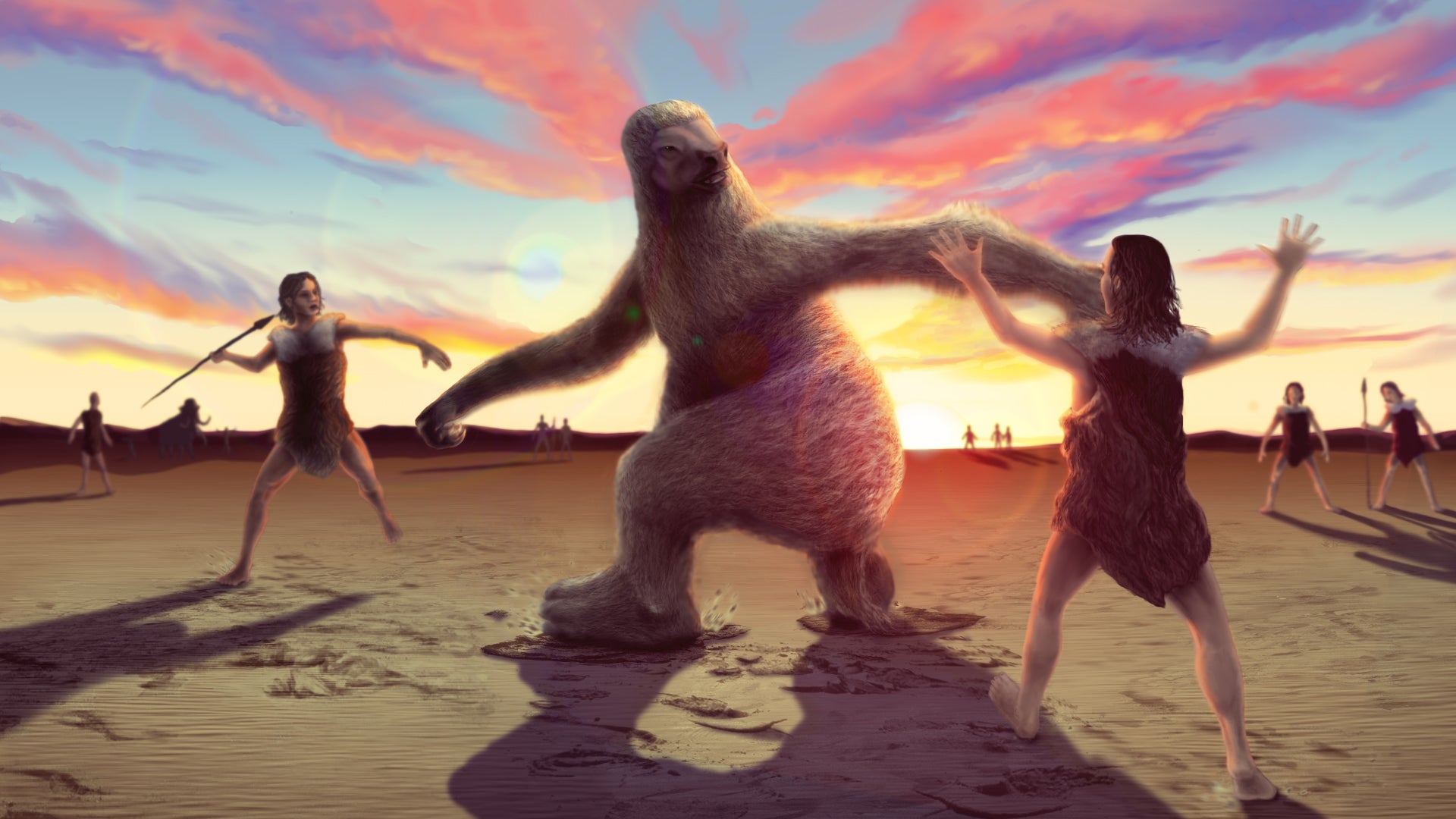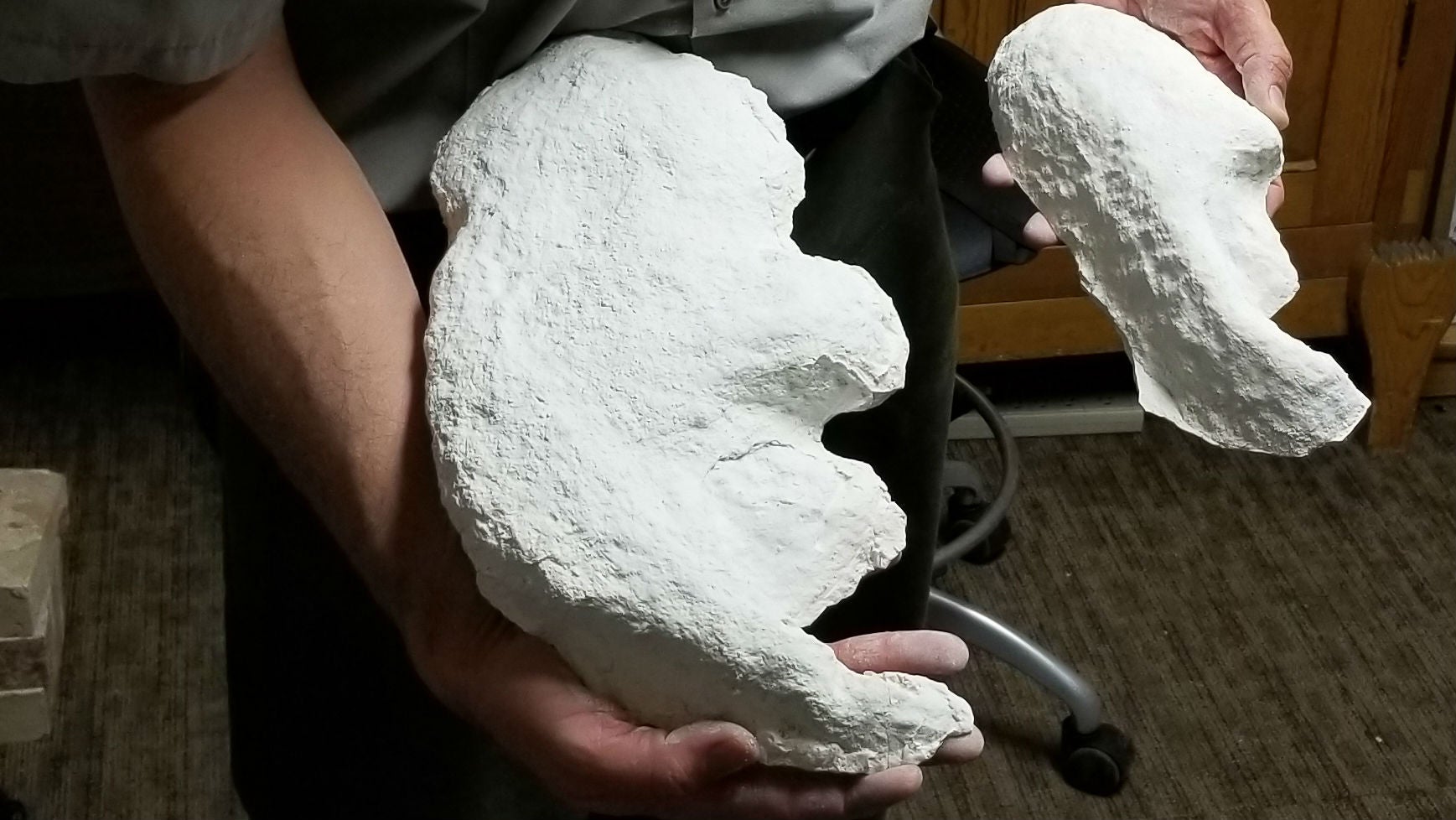Early humans probably enjoyed a giant sloth snack
Unlike modern sloths, which spend their time vegging out in trees in South and Central America, ancient giant sloths were the size of an ox and lumbered around on the ground. They died off on the continental US around 11,700 years ago and likely lived for another few thousand years on islands in the Caribbean. It’s not clear what led to their extinction, though some scientists have hypothesized that humans were in part to blame. When we coexisted with giant sloths, we probably used to eat them.


Unlike modern sloths, which spend their time vegging out in trees in South and Central America, ancient giant sloths were the size of an ox and lumbered around on the ground. They died off on the continental US around 11,700 years ago and likely lived for another few thousand years on islands in the Caribbean. It’s not clear what led to their extinction, though some scientists have hypothesized that humans were in part to blame. When we coexisted with giant sloths, we probably used to eat them.
In a paper published today (April 25) in Science Advances, a team led by scientists from the University of Arizona and the US National Parks Service report scouring the grounds of the White Sands National Monument in New Mexico for evidence of the historical relationship between humans and giant sloths. The White Sands monument, a park-like area full of sand dunes, contains footprints left by all kinds of ancient creatures. Giant sloth footprints are fairly easy to recognize: They’re almost two feet long (about 30 cm) and a foot wide, shaped like kidneys, and show evidence of deep claws.

In total, the researchers found 251 giant sloth tracks in White Sands from between 15,000 and 10,000 years ago. But these tracks were rarely alone. In many cases, human footprints from the same time period were actually inside the sloth tacks, suggesting that our ancestors were creeping up on these creatures. The direction of the tracks also tell a story of pursuit. The team hypothesizes that the sloths were running, sometimes in circles, sometimes darting away, from hungry humans who appear to have worked in groups.
Years of erosion have degraded the quality of some of these footprints, so the scientists aren’t 100% confident that they prove humans hunted giant sloths. At the very least, though, “We…infer that humans actively stalked and/or harassed sloths, if not hunted them,” the authors write.
Assuming they were easy to hunt, giant sloths would have made a nice meal. One sloth would be roughly the size of a bison, which could hypothetically provide about 612,000 calories to a human.